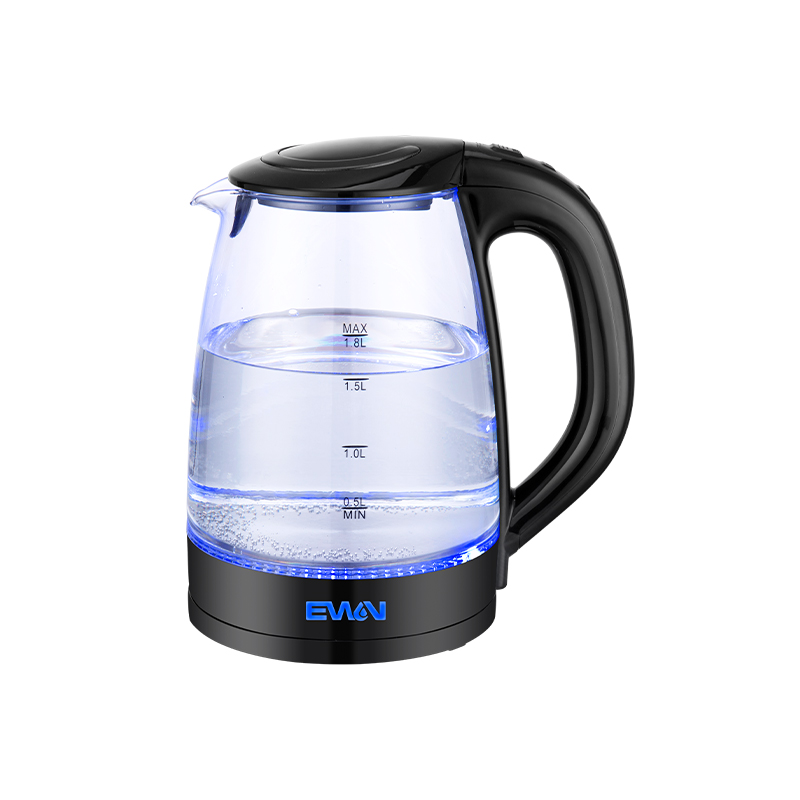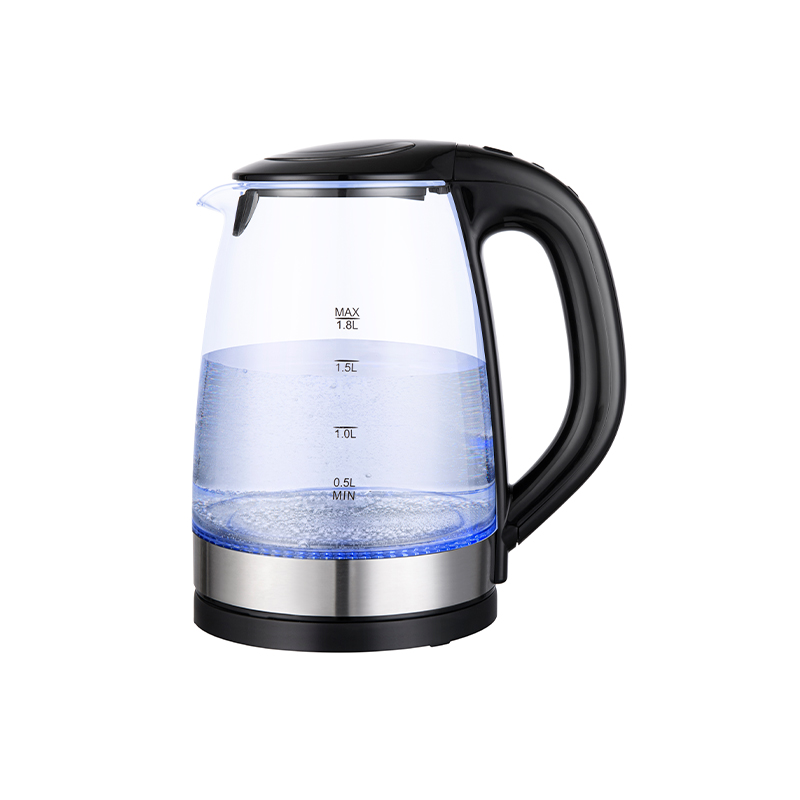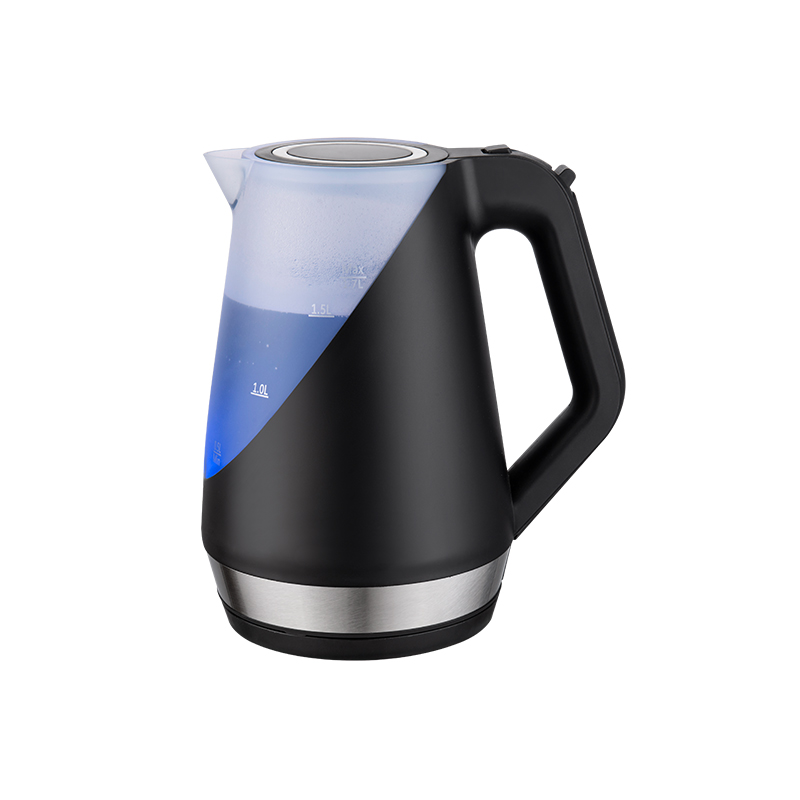+86-18667862027
Web Menu
Product Search
Exit Menu
Are stainless steel kettles more resistant to rust, corrosion, or staining than plastic or glass kettles?
Introduction to Stainless Steel Kettles
Electric kettles are an essential part of daily life for many households. They provide a quick and convenient way to boil water for various purposes, such as making tea, coffee, or cooking. While there are different types of kettles available, stainless steel, plastic, and glass are some of the most common materials used for their construction. Each material has its own set of advantages and disadvantages, particularly when it comes to their resistance to rust, corrosion, and staining. In this article, we will explore how stainless steel kettles compare to plastic and glass kettles in terms of durability and resistance to these issues.
Stainless Steel: Properties That Prevent Rust, Corrosion, and Staining
Stainless steel is a popular material for making kettles due to its strong, durable, and resistant properties. The key to stainless steel’s resistance to rust and corrosion lies in its composition. Stainless steel is an alloy made primarily of iron, chromium, and other metals, such as nickel and molybdenum. The presence of chromium (at least 10.5%) in the alloy is crucial because it forms a protective oxide layer on the surface of the metal. This thin, invisible layer acts as a barrier, preventing oxygen from interacting with the iron and thus protecting the material from rust and corrosion.
In addition to its rust and corrosion resistance, stainless steel is also highly resistant to staining. The surface of stainless steel is smooth and non-porous, which makes it difficult for substances to adhere to it, thus reducing the risk of staining. This feature is especially beneficial for kettles that come into frequent contact with hot water, minerals, and other substances that could cause stains or discoloration.
Properties of Stainless Steel vs. Plastic and Glass Kettles
| Material | Resistance to Rust | Resistance to Corrosion | Resistance to Staining |
|---|---|---|---|
| Stainless Steel | High | High | High |
| Plastic | Low | Low | Medium to High |
| Glass | None | Low | Medium |
Rust Resistance in Stainless Steel Kettles
Rust is a common concern for many household appliances made from metal, especially when they come into contact with water regularly. However, stainless steel kettles are designed to resist rust more effectively than other materials. Rust occurs when iron reacts with oxygen and moisture, forming iron oxide. In the case of stainless steel, the presence of chromium creates a thin layer of chromium oxide on the surface, which prevents further oxidation of the iron.
Plastic and glass kettles, on the other hand, do not rust because they are not made from metal. Plastic kettles are susceptible to other forms of wear and tear, such as cracking or discoloration, but they do not rust. Glass kettles also avoid rust but can face issues related to thermal shock or breakage under extreme temperature changes.
Corrosion Resistance in Stainless Steel Kettles
Corrosion is the process by which a material deteriorates due to chemical reactions with its environment, often involving water, air, or chemicals. In the case of kettles, prolonged exposure to hot water, minerals (such as calcium), and steam can lead to corrosion, particularly in areas where the kettle is in direct contact with these substances.
Stainless steel kettles are highly resistant to corrosion due to the protective oxide layer that forms on the surface. Even when exposed to harsh environments, such as high humidity or acidic substances (like vinegar), stainless steel can withstand these conditions without corroding. In comparison, plastic kettles are vulnerable to the effects of high temperatures and chemicals, which can cause them to degrade over time. Glass kettles, while not prone to corrosion, are fragile and can break easily if subjected to sudden temperature changes or impacts.
Staining Resistance in Stainless Steel Kettles
Staining is a common issue with both plastic and glass kettles, as these materials tend to absorb substances more readily than stainless steel. Plastic kettles are particularly prone to staining, especially when used with hot water and tea or coffee. The porous nature of plastic allows substances to penetrate the surface, leaving discoloration that can be difficult to clean. Additionally, some plastics can discolor or fade over time due to exposure to heat or sunlight.
Glass kettles, while smooth and non-porous, are not immune to staining. While glass does not absorb substances in the same way plastic does, it can develop stains from minerals in the water, such as calcium deposits or lime scale. Over time, these stains can make the glass appear cloudy or discolored.
Stainless steel, in contrast, is highly resistant to staining due to its smooth, non-porous surface. This makes it much easier to maintain and clean. The surface of a stainless steel kettle does not retain mineral deposits, and any staining that does occur can usually be wiped away with minimal effort. Additionally, many stainless steel kettles come with a polished finish that further reduces the appearance of stains and enhances the overall aesthetic.
Staining Resistance in Different Kettle Materials
| Material | Susceptibility to Staining | Ease of Cleaning |
|---|---|---|
| Stainless Steel | Low | Easy |
| Plastic | Medium to High | Moderate |
| Glass | Medium | Moderate to Hard |
Long-Term Durability of Stainless Steel Kettles
Another benefit of stainless steel kettles is their long-term durability. The inherent strength of stainless steel ensures that the kettle can withstand the wear and tear associated with daily use, including exposure to high temperatures, moisture, and pressure. Stainless steel kettles are less likely to crack or break under stress, which makes them more reliable over time compared to glass kettles, which can shatter if dropped or subjected to sudden temperature changes.
Plastic kettles are more prone to physical damage, such as cracking, especially when exposed to high heat over extended periods. While plastic kettles may be more affordable, they generally do not have the same longevity as stainless steel kettles. Over time, plastic can become brittle and may need to be replaced.
Maintenance and Care for Stainless Steel Kettles
Maintaining a stainless steel kettle is relatively simple. Because stainless steel is resistant to rust, corrosion, and staining, it does not require much upkeep to maintain its appearance and functionality. Regular cleaning is often enough to ensure that the kettle remains in good working condition. To avoid mineral buildup, it is recommended to regularly descale the kettle, especially in areas with hard water.
Most stainless steel kettles feature a smooth surface that is easy to wipe clean, and many come with removable filters to reduce limescale buildup. For more stubborn stains or mineral deposits, a mixture of vinegar and water can be used to clean the kettle, as stainless steel can tolerate acidic cleaning solutions without being damaged.Plastic kettles, however, require more careful maintenance to avoid discoloration or damage. Glass kettles, while easier to clean in terms of stains, may require more attention to prevent breakage.
address
No.935 Qiye Road, Zhouxiang Town, Cixi City, Zhejiang Province, China
Sale’s Email
leila@nbewin.com
sales8@nbewin.com
sales9@nbewin.com
Copyrighte Ningbo Ewin Electrical Appliances Co., Ltd. All Rights Reserved.












